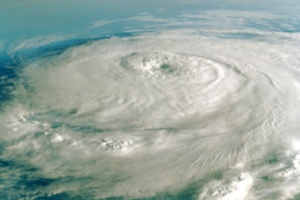 Hurricane season is officially underway – and the National Oceanic and Atmospheric Administration is predicting that hurricane activity will be at above normal levels this year. With circulating air and wind speeds that can exceed 155 miles per hour, these storm systems are capable of inflicting tremendous damage on communities, such as the devastation wrought by Hurricane Sandy last year on the northeastern U.S. and six other countries.
Hurricane season is officially underway – and the National Oceanic and Atmospheric Administration is predicting that hurricane activity will be at above normal levels this year. With circulating air and wind speeds that can exceed 155 miles per hour, these storm systems are capable of inflicting tremendous damage on communities, such as the devastation wrought by Hurricane Sandy last year on the northeastern U.S. and six other countries.
With damage comes cleanup, and OSHA is reminding employers of their responsibility to protect workers from the anticipated hazards associated with response and recovery operations.
With circulating air and wind speeds that can exceed 155 miles per hour, hurricanes are capable of inflicting tremendous damage on communities, such as the devastation wrought by Hurricane Sandy last year on the northeastern U.S. and six other countries.
Cleaning up after a hurricane can involve restoring electricity, communications, water and sewer services; demolition activities; removal of floodwater from structures; entry into flooded areas; cleaning up debris; tree trimming; structural, roadway, bridge, dam and levee repair; use of cranes, aerial lifts and other heavy equipment; hazardous waste operations; and emergency response activities.
OSHA recommends that employers and workers involved in cleanup efforts should carefully evaluate work areas for hazards and take appropriate measures to keep workers safe. The agency offers a Response/Recovery page as well as a Hurricane eMatrix, which features information on hazard exposures and risk assessments for hurricane response and recovery work. The information in the matrix is organized based on the types of activities performed so that it is easy for workers to identify the precautions they should take based on the tasks they will be performing.
Hurricane season officially ends on Nov. 30th.

